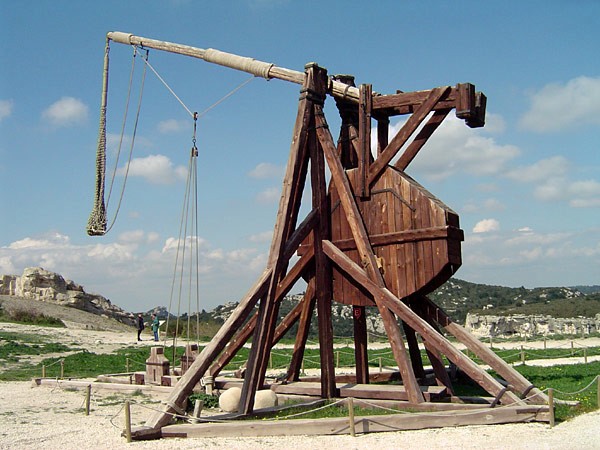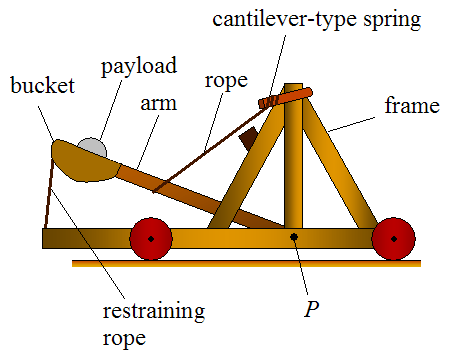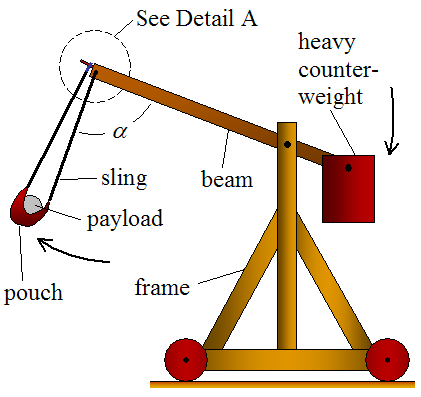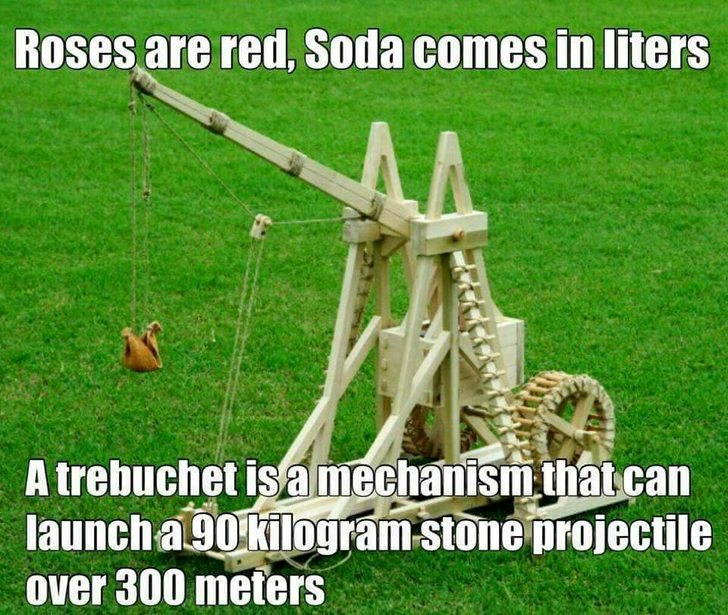The trebuchet is an amazing war weapon created to function using multiple simple things in a complicated, combined way.
Throwing a rock has always been a very dependable and simple way of doing someone harm. It can knock you out and, if strong and precise enough, it can kill you. The trebuchet was just someone thinking “What if rock REALLY BIG”.


OK, it is unfair for me to say that. The catapult was the big rock thrower while the trebuchet was the needed upgrade. Big C appeared in ancient Greece around the 4th century BCE. Early Greek catapults, such as the gastraphetes and later torsion-powered devices like the ballista and onager, were developed for siege warfare and quickly spread throughout the Mediterranean.
Big T originated later. The traction trebuchet, operated by teams pulling ropes, first appeared in China around the 4th century BCE. The more advanced counterweight trebuchet, which uses a heavy weight to power its arm, was developed in the Eastern Mediterranean or Byzantine Empire around the 6th to 7th centuries CE and spread to Europe by the 12th century.

The first uses an arm and rope to push
while the second uses rope, weight, and gravity to swing.

Great Successes and Failures
Successes:
- Trebuchets were renowned for their ability to hurl massive stones, incendiaries, and even diseased carcasses over castle walls (fucking cool), making them highly effective during sieges.
- Notable successes include the Siege of Acre (1189–1191) during the Third Crusade, where trebuchets played a crucial role in breaking the city’s defenses.
- The Siege of Stirling Castle (1304) is famous for the use of “Warwolf,” a massive trebuchet built by the English, which reportedly forced the defenders to surrender due to its overwhelming destructive power(COWARDS).
Failures:
- Despite their effectiveness, trebuchets had their downsides. Their construction was time-consuming, requiring significant resources and skilled labor.
- At times, poorly constructed trebuchets would collapse or malfunction, causing injuries or failing to breach fortifications.
- In some sieges, defenders adapted by reinforcing their walls or using countermeasures, reducing the trebuchet’s effectiveness.




Conclusion
The trebuchet stands out in medieval siege warfare for its innovative use of counterweight mechanics, enabling armies to breach formidable defenses. While it achieved legendary successes, it also faced notable failures due to its complexity and the evolving tactics of defenders. Its distinction from the catapult lies primarily in its power source and resulting capabilities, making it a symbol of both medieval ingenuity and the relentless arms race of siege technology.
Leave a Reply